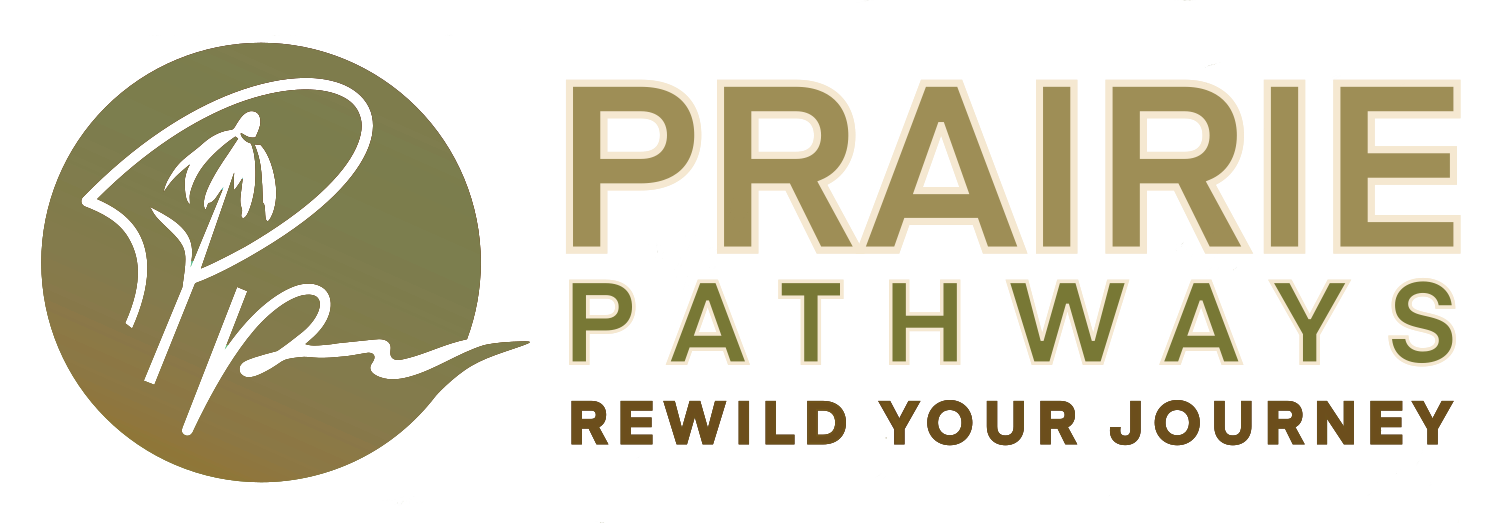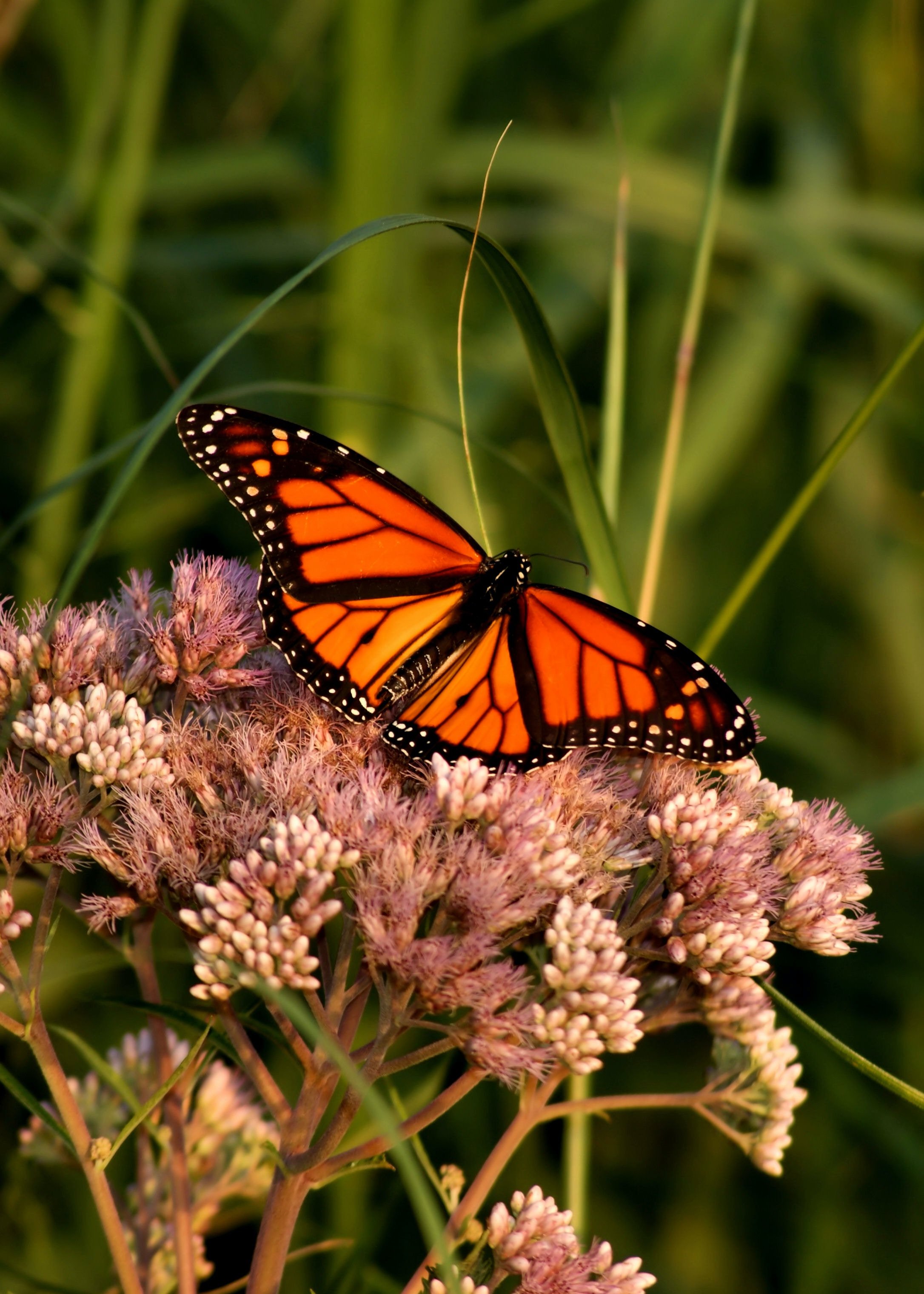A Feast for Royalty
The monarch butterfly (Danaus plexippus) bears the title of Illinois’ official state insect. Previous issues of The Pathfinder noted the critical importance of milkweed for these butterflies. In a nutshell, monarch caterpillars only eat the leaves of this plant. Thus
without milkweed, we have no monarchs
(see Xerces Society in the Resources for a listing of milkweed species native to our area).
While milkweed is crucial, it is also key to provide sustenance in our spaces through September. This is when monarchs begin their return journey to their overwintering site in central Mexico. Unlike previous generations of monarchs that flitted through the air earlier in the summer and lived just a few weeks, this last generation can live up to nine months. Even more incredibly, they are able to travel thousands of miles to a specific nesting site they have never visited before. It is this generation that will begin the journey north the following year as the migratory cycles starts again.
To support the monarch butterflies on their return journey, it is important to incorporate a variety of nectar-producing plants in our living and work environments. These include natives, such as Joe Pye Weed, showy and stiff goldenrod, liatris, coneflowers, black-eyed Susans and New England asters, among others. If possible, a shallow dish lined with pebbles (natural or glass) and filled with water that barely covers the pebbles’ surface can provide hydration.
Although we are entering the last weeks of summer, we still have August and September to include these perennials in our spaces (be sure to get them in the ground a few weeks before first frost, which typically occurs in October, so their roots can establish). So how about it? Let’s prepare a fall floral feast for the monarchs!
Resources
Monarch Joint Venture. No date. “Migration.” https://monarchjointventure.org/monarch-biology/monarch-migration.
U.S. Forest Service. No date. “Migration and Overwintering.” https://www.fs.usda.gov/wildflowers/pollinators/Monarch_Butterfly/migration/index.shtml.
Xerces Society. 2018. “Monarch Nectar Plants: Midwest.” https://xerces.org/publications/plant-lists/monarch-nectar-plants-midwest.

